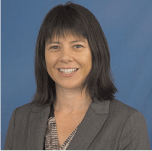Long-distance commuter workforce
Liesl VerwoertKPMG.
The APPEA Journal 53(2) 467-467 https://doi.org/10.1071/AJ12078
Published: 2013
Abstract
Australia’s resources industry has experienced record growth and a strong demand for labour during the past decade. Much of this demand is occurring in remote parts of Australia and is met by population growth of resident and non-resident long-distance-commuter (LDC) workers.
LDC workers are defined as those who travel significant distances between where they usually live and work, and include fly-in/fly-out and drive-in/drive-out workers.
While the LDC workforce is not new, the scale of this phenomenon and the shift in commuting patterns among this workforce to meet Australia’s evolving labour demands is unprecedented.
KPMG have quantified the size and distribution of the LDC workforce by industry and region across Australia. This was part of a ground-breaking workforce mobility study commissioned by the Minerals Council of Australia (in conjunction with APPEA and Skills DMC).
Findings from this study answer the following questions:
-
To what extent has the size of the LDC workforce increased in the past five years up to 2011?
-
How does the prevalence of long-distance commuting in the oil and gas industry compare with other industries?
-
What are the top three resource regions that attract LDC workers and what do the commuter routes look like?
This extended abstract contributes to our knowledge base about the geographic mobility of the Australian workforce. It reveals the LDC workforce facts and thereby helps guide industry and government policy to ensure the economic and social prosperity of Australia’s resource regions and their residents and workers.

Liesl Verwoert is an associate director at KPMG. She completed a BA (economics and geography) honours at Monash University, Melbourne. She has more than 14 years of experience in demographic advisory roles for a wide range of clients across various industries including mining and construction. Her key areas of experience are population, housing, and analysis of workforce-demographic trends, which is sought by clients on issues relating to workforce planning, policy development, geographic positioning, trade areas, and consumer-market profiles. She has an extensive knowledge of demographic data sets and skills in geographic information systems (GIS) technology. She uses her knowledge and experience to provide demographic insight across markets and geographies in Australia. |


